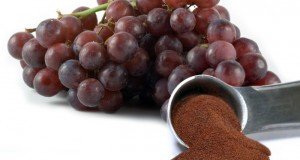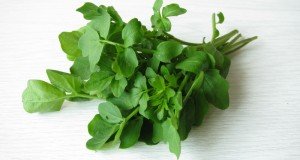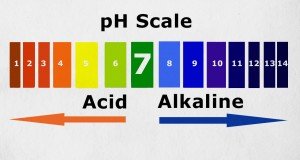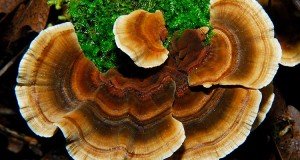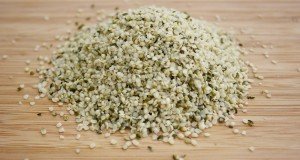Breast cancer healing potential found in cat’s claw, says Brazilian study
(NaturalHealth365) Great news for breast cancer patients: The rainforests of the world are said to contain over 5 million healing substances, with more being discovered every year. One such plant that has been known for its effect on cancer for almost 100 years is Una de Gato, or cat’s claw.
While the evidence has been mounting for years as to how this strange-looking plant can help heal cancer on several fronts, new research published this year by Brazilian scientists dives deeper into what makes cat’s claw work specifically against breast cancer cells.
Cat’s claw was first shown to have cancer-healing effect in the 1920’s
The story of Uncaria tomentosa and Uncaria guianensis, the two versions of cat’s claw that contain healing properties, reads like a true-to-life adventure tale. As the story goes, German naturalist and scientist Dr. Arturo Brell was living and working in the Peruvian rainforest. He had been using cat’s claw for his rheumatoid arthritis and gave it to another colonist, Luis Schular, who had been diagnosed with Stage IV lung cancer.
Schular began drinking a tea made from the herb three times daily. One year later, his cancer was gone.
Since then, numerous studies have been conducted that show Una de Gato’s healing effect on many conditions that can lead to cancer. The biggest link (as Dr. Brell knew back in the 1920’s and native peoples have known for centuries) is its role as an anti-inflammatory.
Cat’s claw effects inflammatory responses in cancer cells
Inflammation is actually initiated by the body as a mechanism for healing. When this response becomes chronic, however, it may be a factor for cancer proliferation at the DNA level. For example, many breast cancer cell lines show evidence of specific genetic signatures for inflammation.
Epidemiological studies find that nearly 15 percent of all cancer cases worldwide are associated with some kind of chronic infection. Kaposi’s sarcoma, a cancer that leads to lesions in soft tissue, is directly connected to the herpes virus and gastric cancer has been linked to chronic inflammation caused by Helicobacter pylori in the gut. Even when a specific infectious condition is not present, scientists since the mid-1800’s have speculated about the role inflammation plays in cancer.
Cat’s claw, especially Uncaria guianensis, effects cancer cells in a powerful way by “turning off” the production of a substance called tumor necrosis factor-alpha, a messenger molecular for inflammation. According to researchers at Louisiana State University Medical Center, it also inhibits nuclear factor-kappa beta, an “inflammatory switch” for cancer and other diseases.
For years researchers have known about cat’s claw’s other caner healing effects as well, such as its ability to boost T-cell counts in the immune system after chemotherapy. This, in turn, can lead to the repair of healthy cells damaged by radiation.
Scientists have also known about cat’s claw’s ability to induce cancer cell death (or apoptosis) directly, although the exact mechanisms through which it can do this have remained a mystery – until this year.
Brazilian researchers now know how cat’s claw can affect apoptosis in breast cancer cells
In an exciting new discovery published in the August 30, 2016 edition of The Journal of Ethnopharmacology, researchers at the Federal University of Santa Maria in Brazil isolated how Uncaria tomentosa in particular effects the formation of certain nucleotides that are the basis for cancer cell DNA. Specifically, an extract of Uncaria tomentosa had a significant effect on adenine, a “nucleobase” which was used in the formation of breast cancer cell nucleotides.
The new findings piggyback on an earlier study conducted by Australian researchers in 2006 which linked the presence of certain alkaloids in cat’s claws to the inhibition of leukemia cell growth. At the time, the specific mechanisms through which the alkaloids did this was not completely understood (although its effect on immune system cytokines was and still is a possibility).
So what does all this mean for you and your journey towards a healthy, cancer free body? To be sure, the research will continue. The dozens of known healing substances, such as alkaloids, glycosides, tannins and flavonoids, inside Una de Gato’s claw-like petals, however, makes it a strong phytonutrient that you should consider adding to your cancer prevention and healing toolbox.
About the author: Dr. Veronique Desaulniers (“Dr. V”) is a best-selling author and specialist in Chiropractic, Bio-Energetics, Meridian Stress Analysis, Homeopathy and Digital Thermography. After 30 years in active practice, she decided to “retire” and devote her time to sharing her personal, non-toxic Breast Cancer healing journey with others. Her years of experience and research have culminated in “The 7 Essentials™ “, a step-by-step coaching program that unravels the mystery of healing the body. Her website and personal healing journey have touched the lives of thousands of women around the globe. To get your F.R.E.E. 7-day mini e-course and to receive her weekly inspiring articles on the power of natural medicine – visit: BreastCancerConqueror.com
References:
HTTP://WWW.LIFEEXTENSION.COM/MAGAZINE/2007/3/NU_CATSCLAW/PAGE-01
https://www.medicinehunter.com/files/womans_world_rainforest.pdf
https://www.hindawi.com/journals/ecam/2012/676984/
https://www.ncbi.nlm.nih.gov/pubmed/27590731
https://www.ncbi.nlm.nih.gov/pmc/articles/PMC1994795/
https://www.ncbi.nlm.nih.gov/pubmed/4614858
https://www.ncbi.nlm.nih.gov/pubmed/12120814
https://www.ncbi.nlm.nih.gov/pubmed/11603848
https://www.ncbi.nlm.nih.gov/pubmed/9882039
https://www.ncbi.nlm.nih.gov/pubmed/16445836



